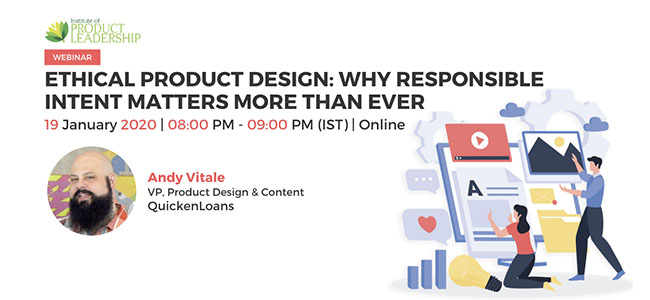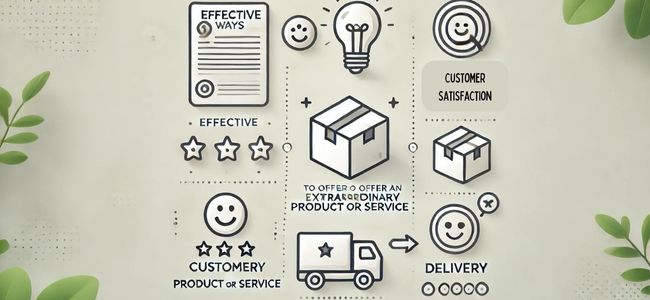Q & A from Steve Caplow’s Webinar
Prof. Steve Caplow’s recent webinar on creating unique value propositions for B2B products was very well received. Many questions were asked during the talk, which Prof. Caplow couldn’t get to within the allowed time. Here’s a collation of the questions asked and his answers. For a summary of the webinar, head on to the webinar page.
1. At what stage in the development of the product is the positioning statement created?
The positioning statement starts getting formulated in the early stages of product development. As we start learning more about who our customers are and their problems, the elements of a good positioning statement - target customer segment and persona, their needs and challenges, the competitors and alternatives available to them - get validated and defined. The positioning statement is a very strategic tool that captures the essence of what makes a successful product - who are we building it for, why do they need it, and how it is uniquely different from the other alternatives.
The positioning statement starts getting formulated in the early stages of product development. As we start learning more about who our customers are and their problems, the elements of a good positioning statement - target customer segment and persona, their needs and challenges, the competitors and alternatives available to them - get validated and defined. The positioning statement is a very strategic tool that captures the essence of what makes a successful product - who are we building it for, why do they need it, and how it is uniquely different from the other alternatives.
2. Can you market a product that isn’t really differentiated?
Any product can be marketed, the question is how well. When a product is not well differentiated, it makes it harder to position and market the product against other competitors. Take the category of Android smartphones. There is a glut of phone manufacturers and models, and by and large they all seem to be similar. The only way to really differentiate is by price. In some product categories, even though the products are very similar, the overall offering (the whole product) is differentiated by means of better service.
Any product can be marketed, the question is how well. When a product is not well differentiated, it makes it harder to position and market the product against other competitors. Take the category of Android smartphones. There is a glut of phone manufacturers and models, and by and large they all seem to be similar. The only way to really differentiate is by price. In some product categories, even though the products are very similar, the overall offering (the whole product) is differentiated by means of better service.
3. Why does the positioning statement not consider price?
The positioning statement articulates unique value to the customers, about how well the product meets their needs, and why it is advantageous as compared to the competition. It’s intent is to communicate the value in a compelling manner so that the customers are willing to pay a certain price for the product. So price is not explicitly mentioned in the positioning statement, although it is implicit in the way the value is communicated.
The positioning statement articulates unique value to the customers, about how well the product meets their needs, and why it is advantageous as compared to the competition. It’s intent is to communicate the value in a compelling manner so that the customers are willing to pay a certain price for the product. So price is not explicitly mentioned in the positioning statement, although it is implicit in the way the value is communicated.
4. Are there any techniques used in industry to find out key differentiator from a competitor offering? If yes, then what are they?
How a company chooses for its product to be different from those of its competitors is an interesting topic of discussion in itself. Companies choose to participate in a market in different ways. They may decide to serve a broad market, or target their products to a specific segment in the market. They may compete based on lower prices by offering acceptable quality or command a premium price by offering a highly distinctive offering. Let’s take the example of the familiar category of computers, and in particular, laptops.
Dell, and many other companies that make laptops such as Acer, HP, Toshiba, Samsung, etc., target their products to the broad market. In this market, the companies offer by and large similar capabilities for processor speed, memory, storage, etc., and compete on lowering their costs and hence lower prices to consumers. Apple, on the other hand, also offers products to the broad market, however, Apple chooses to offer highly differentiated products that have a superior design and finish, and hence command a premium price in the market.
There are also organizations like OLPC (One Laptop Per Child) that design and create inexpensive laptops for children in developing countries. They also focus on lower costs but do not target the broad consumer market. Panasonic builds a rugged tough notebook that is designed to be used in extreme conditions and can with withstand drops, spills and dust, which none of the laptops that target the broad consumer market are able to do. Panasonic has created a uniquely differentiated product that targets specific segments of the market, such as automotive field workers, oil & gas, manufacturing assembly lines, etc.
How a company chooses for its product to be different from those of its competitors is an interesting topic of discussion in itself. Companies choose to participate in a market in different ways. They may decide to serve a broad market, or target their products to a specific segment in the market. They may compete based on lower prices by offering acceptable quality or command a premium price by offering a highly distinctive offering. Let’s take the example of the familiar category of computers, and in particular, laptops.
Dell, and many other companies that make laptops such as Acer, HP, Toshiba, Samsung, etc., target their products to the broad market. In this market, the companies offer by and large similar capabilities for processor speed, memory, storage, etc., and compete on lowering their costs and hence lower prices to consumers. Apple, on the other hand, also offers products to the broad market, however, Apple chooses to offer highly differentiated products that have a superior design and finish, and hence command a premium price in the market.
There are also organizations like OLPC (One Laptop Per Child) that design and create inexpensive laptops for children in developing countries. They also focus on lower costs but do not target the broad consumer market. Panasonic builds a rugged tough notebook that is designed to be used in extreme conditions and can with withstand drops, spills and dust, which none of the laptops that target the broad consumer market are able to do. Panasonic has created a uniquely differentiated product that targets specific segments of the market, such as automotive field workers, oil & gas, manufacturing assembly lines, etc.

5. Should I provide copies of the UVP template to Sales?
The Unique Value Proposition positioning template is an internal document. It is used by the product and marketing teams to ensure everyone is on the same page as far as understanding the key elements of the value proposition - target customer segment and persona, their needs and challenges, specific features that address them, and why the product is better than specific competitors or alternatives the customer has available to them. Sales needs to know this information and the product manager and the product marketing manager work together to ensure sales is trained on the product, objection handling, selling against competitors, etc. However the Unique Value Proposition positioning template is an internal strategic tool and is not shared with Sales.
The Unique Value Proposition positioning template is an internal document. It is used by the product and marketing teams to ensure everyone is on the same page as far as understanding the key elements of the value proposition - target customer segment and persona, their needs and challenges, specific features that address them, and why the product is better than specific competitors or alternatives the customer has available to them. Sales needs to know this information and the product manager and the product marketing manager work together to ensure sales is trained on the product, objection handling, selling against competitors, etc. However the Unique Value Proposition positioning template is an internal strategic tool and is not shared with Sales.
6. What's the difference between Product Marketing and Product Management? Is Product Marketing same as Marketing?
Product Management (PM) and Product Marketing (PMM) are both important functions necessary to ensure product success. Many companies make the distinction between them as “inbound” vs. “outbound”. The best way to think about PM and PMM is that PM is focused on ensuring the right product is build for the right customers. PMM focus is to ensure the value proposition is positioned and communicated in the right manner, and Sales teams are trained on the product.
Marketing is a much broader function. PMM is a function within Marketing. There are many other teams in the Marketing organization with dedicated focus on web site, social media, working with press, media and analysts, lead generation, field marketing, etc.
Product Management (PM) and Product Marketing (PMM) are both important functions necessary to ensure product success. Many companies make the distinction between them as “inbound” vs. “outbound”. The best way to think about PM and PMM is that PM is focused on ensuring the right product is build for the right customers. PMM focus is to ensure the value proposition is positioned and communicated in the right manner, and Sales teams are trained on the product.
Marketing is a much broader function. PMM is a function within Marketing. There are many other teams in the Marketing organization with dedicated focus on web site, social media, working with press, media and analysts, lead generation, field marketing, etc.
7. How do you convert a 'want' into ‘need’?
Wants are wishes. Needs are essential. So the question is, can we communicate the value proposition in such a compelling way that people start believing that the product is essential to them, and not just a fancy "nice to have". The key to this, for any product and any business, is understanding the psychology of the customers. What is it that they are really trying to achieve? What is it that they are trying to get done? We typically tend to focus on the functional jobs of our customers, however there are emotional and social aspects to consider as well. What are the mental triggers that drive actions and behavior? We need to know them in order to utilize them in our positioning and marketing messages. For example, do people really need an iPad? For the most part, laptops work just fine. The iPad, when it launched, did not solve any specific problems that we had with our laptops. Yet Apple sold hundreds of millions of iPads, convincing all those people that it is essential to own one. People feel empowered and cool carrying a laptop around. It makes life a little more pleasurable. Apple’s positioning addresses this desire and aspiration.
Good marketers tell effective stories to include such aspirational elements in their product positioning. It is done not just in B2C but also in B2B. Cisco makes infrastructure and network equipment. However, their positioning is about “redefining IT for agility, better business outcomes and real business impact, to broaden your reach and get your products to market faster”. This is what IT and the line of business really care about, rather than speeds and feeds.
Wants are wishes. Needs are essential. So the question is, can we communicate the value proposition in such a compelling way that people start believing that the product is essential to them, and not just a fancy "nice to have". The key to this, for any product and any business, is understanding the psychology of the customers. What is it that they are really trying to achieve? What is it that they are trying to get done? We typically tend to focus on the functional jobs of our customers, however there are emotional and social aspects to consider as well. What are the mental triggers that drive actions and behavior? We need to know them in order to utilize them in our positioning and marketing messages. For example, do people really need an iPad? For the most part, laptops work just fine. The iPad, when it launched, did not solve any specific problems that we had with our laptops. Yet Apple sold hundreds of millions of iPads, convincing all those people that it is essential to own one. People feel empowered and cool carrying a laptop around. It makes life a little more pleasurable. Apple’s positioning addresses this desire and aspiration.
Good marketers tell effective stories to include such aspirational elements in their product positioning. It is done not just in B2C but also in B2B. Cisco makes infrastructure and network equipment. However, their positioning is about “redefining IT for agility, better business outcomes and real business impact, to broaden your reach and get your products to market faster”. This is what IT and the line of business really care about, rather than speeds and feeds.
8. Are there any tools/techniques that are designed to make product manager’s job easier?
Too broad and open ended question, possibly a blog post in itself, and not related to this topic, so deal with it separately.
Too broad and open ended question, possibly a blog post in itself, and not related to this topic, so deal with it separately.
9. In a B2B scenario, how to calculate the value in money terms and show an ROI to justify a business case? Any examples that you can throw a light on.
For B2B products, customers are typically looking to reduce their operational costs (associated with compliance, security, marketing, customer support, etc.), and/or increase productivity and operational benefits. The key is to understand the important criteria that customers are going to use when evaluating a solution. The value obtained from the implementation of a solution has to justify a significant return over the total cost of ownership of the solution, which is not just the initial cost of procurement, but also includes ongoing maintenance and support and personnel costs required to manage the implementation. It is important to establish these parameters to demonstrate a significant ROI.
Many companies have ROI calculators to help their customers assess the ROI specific to their organization and parameters. See Cisco’s ROI Calculator for the Borderless Network: http://www.cisco.com/assets/sol/bn/flash/benefits_roi_calc/ or Oracle Tiered Storage ROI Calculator: http://www.oracle.com/us/media/calculator/tieredstorage/index.html
For B2B products, customers are typically looking to reduce their operational costs (associated with compliance, security, marketing, customer support, etc.), and/or increase productivity and operational benefits. The key is to understand the important criteria that customers are going to use when evaluating a solution. The value obtained from the implementation of a solution has to justify a significant return over the total cost of ownership of the solution, which is not just the initial cost of procurement, but also includes ongoing maintenance and support and personnel costs required to manage the implementation. It is important to establish these parameters to demonstrate a significant ROI.
Many companies have ROI calculators to help their customers assess the ROI specific to their organization and parameters. See Cisco’s ROI Calculator for the Borderless Network: http://www.cisco.com/assets/sol/bn/flash/benefits_roi_calc/ or Oracle Tiered Storage ROI Calculator: http://www.oracle.com/us/media/calculator/tieredstorage/index.html
About Prof Steve Caplow
Prof Caplow has spent the bulk of his career in Product Marketing as VP Marketing in IT/Enterprise Software industry. He founded Caplow Associates in 2001, which is an Independent Consulting Practice focused on Growth Strategy, Positioning, Messaging, Go-to-Market. Strategic Relationships and Training. Prof. Caplow is also a trainer/speaker for Institute of Product Leadership (IPL).
About Prof Steve Caplow
Prof Caplow has spent the bulk of his career in Product Marketing as VP Marketing in IT/Enterprise Software industry. He founded Caplow Associates in 2001, which is an Independent Consulting Practice focused on Growth Strategy, Positioning, Messaging, Go-to-Market. Strategic Relationships and Training. Prof. Caplow is also a trainer/speaker for Institute of Product Leadership (IPL).
Facebook
Twitter
LinkedIn
Upcoming Events
[add_eventon_list hide_past="yes" hide_empty_months="yes" event_count="15" event_type="105,127,93" number_of_months="4" ]
Past Events
Tagged Past Events




